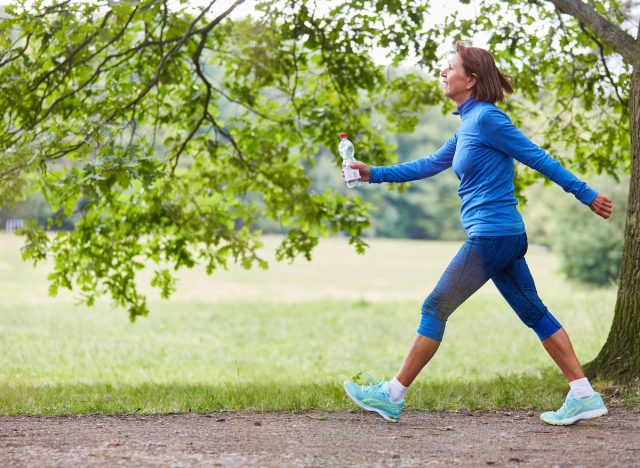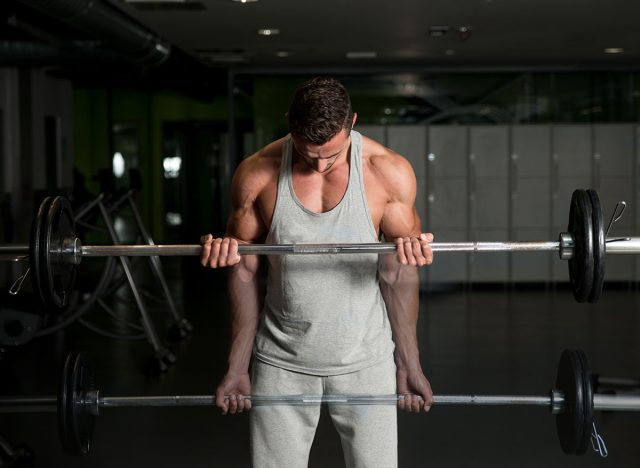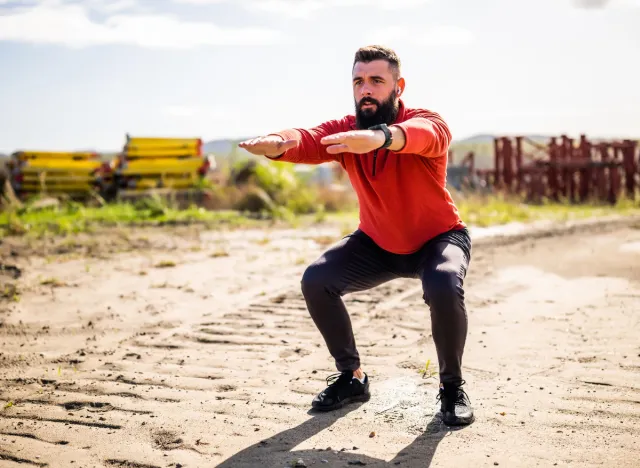If you want to lead a healthy and independent life, strength training should be a non -negotiable part of your routine. This form of exercise supports joint health, stimulates muscle mass and improves posture while reducing inflammation and stiffness – any crucial as you age. To help you stay loud and mobile, we talked about a coach who shares the best strength habits that will make you feel 20 years younger. (You can thank us later!)
“Studies show that muscle mass is directly correlated to a longer lifespan,” explains Charles Tolivercertified trainer at Fitness Planet. “Individuals who do not train in force tend to lose muscles and collagen faster with age, making them more vulnerable to chronic conditions such as diabetes, heart disease and osteoporosis.”
Below, Charles breaks down five essential force habits that will make you feel 20 years younger.
5 The strength moves to feel 20 years younger
Start with mobility work


Before diving into strength training, Charles recommends focusing on mobility.
“Mobility work warms your joints and activates key muscle groups,” explains Charles. “It improves traffic, improves balance and is preparing for heavier elevators, reducing the risk of injury. It maintains your strong joints, prevents stiffness and helps you move with more freedom and control, as you may have done in their twenties!”
Be aware of the tempo of each representative


The tempo of your representatives counts!
According to Charles, “the slowdown in your representatives strengthens control and increases time on tension. It also increases the time under tension, which recruits more muscle fibers and deepens the muscle connection of the mind. It promotes healthy joints, stronger tendons and faster visible results, which makes your body and works younger. ”
Emphasize basic movement models


Fundamental movements such as hinges, push, draw, squats and prevailing the daily actions of Challen and stimulate the strength of the real world.
“In addition, the torsion of the torso to activate the obliques reinforces and increases mobility in the spine, preventing stiffness and muscle imbalances,” said Charles. “This will help improve function, daily posture and coordination, helping you feel strong, stable and confident in your movements.”
Always touch after working


Getting in post-training stretching is easily neglected, but that should not be. In fact, it helps keep your body limbe.
“Static stretching after training helps muscles to recover, reduces pain and improves the flexibility of the joints,” explains Charles. “For the advantages of young people, it reduces constraint, prevents injuries and allows you to feel loose and agile instead of stiff and painful.”
Rest solid


Optimizing your routine bedtime to promote a good night’s rest is essential to help your body recover.
“Without the appropriate sleep, your body cannot repair or rebuild the muscles,” explains Charles. “Restless overtraining accelerates aging and limits the results. A quality sleep from seven to eight hours leads to faster recovery, better hormonal balance and improved energy, helping you look and feel younger years. ”
Alexa Mellardo
Alexa is a strategic strategist, publisher and writer based in Greenwich, Connecticut. It has more than 11 years of experience in creating content for travel publications, lifestyle, fitness, well-being, F&B, house and fame. Learn more about Alexa


